How to best clean a used aquarium prior to a new set-up is the first question to ask, and it concerns aquarium hobbyists and aquascapers alike. Which tools are suitable? Will the cleaning agent leave chemical residue that might be a hazard to the aquarium’s future inhabitants? How to remove stubborn patinas and limescale? And most of all, how can scratches to the glass be prevented? The following article will answer these questions and provide you with many useful hints and tips.
Pre-cleaning
First, the tank needs to be completely emptied. Remove the plants, all of the substrate, all technical equipment and decoration as well as all of the water. Some dirt and detritus, substrate rests and patina on the glass will remain. Now it is important to sluice the tank to get rid of bigger particles (such as grains of sand or gravel). This is necessary to prevent them from scratching the glass during further cleaning procedures. If size and weight of the aquarium permit, it is best to take the tank to a suitable spot for cleaning, preferably outside in the garden or your backyard.
Once there, put the tank - with the opening pointing sideways - on an even surface. This could be an old, disused table, for example. Make sure you put some cushioning between the glass and the table surface, e. g. a thick cardboard layer or a piece of styrofoam to prevent breakage.
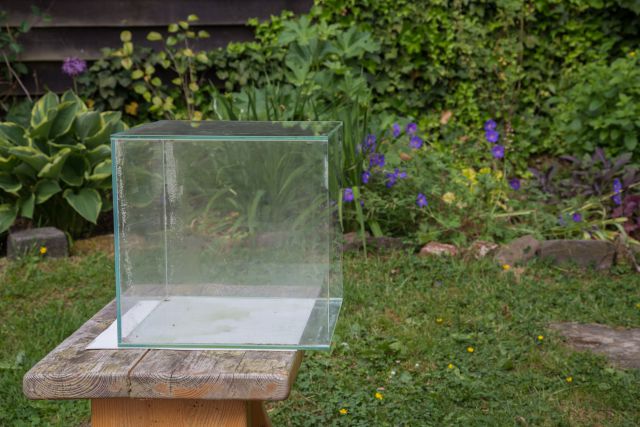
Now (using a garden hose, preferably) wash away all the dirt and residue until no more particles are visible. Since the tank is on its side, the rinsing water can just flow out and seep away into the ground or another suitable receptacle.
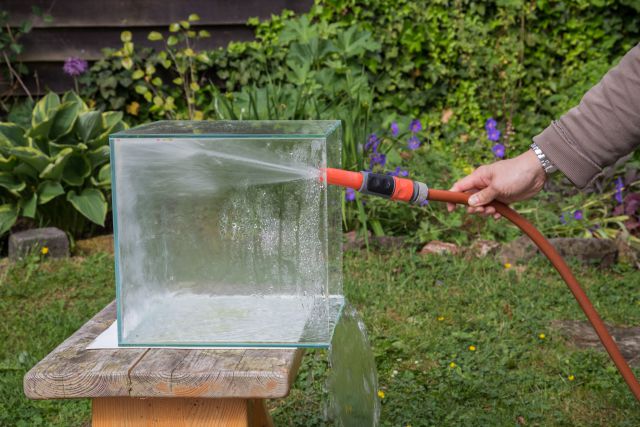
Remove gunk
All that remains now is algae gunk and limescale. For the following steps it is important for the tank to stay wet. That gunk is much easier to get rid of when the glass is wet. If the cleaning takes longer than expected, re-moisturize the panes every now and then. Hard, stubborn encrustations of limestone and algae can be removed by using a household metal sponge. Caution: scrub gently! Make absolutely sure that there are no dirt particles or grains of sand between the glass and the sponge or you'll risk scratches.
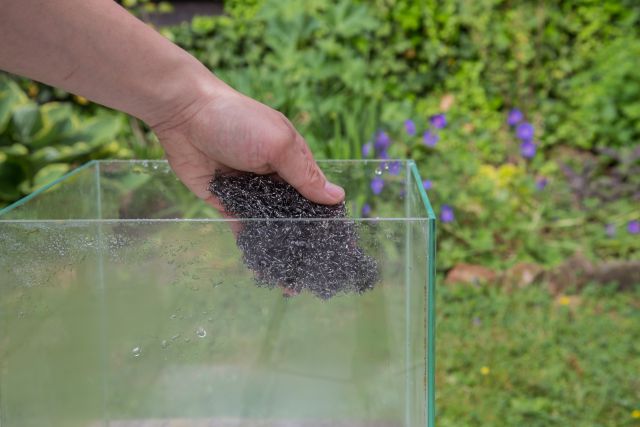
After scrubbing, sluice the tank again to get rid of all the residue.
Softer dirt can be removed with a sponge. Again, you should take the same precautions: The glass should always be kept moist, and make sure you don’t get hard particles between the sponge and the pane. Rub lightly! Again, the aquarium should be sluiced well afterwards.
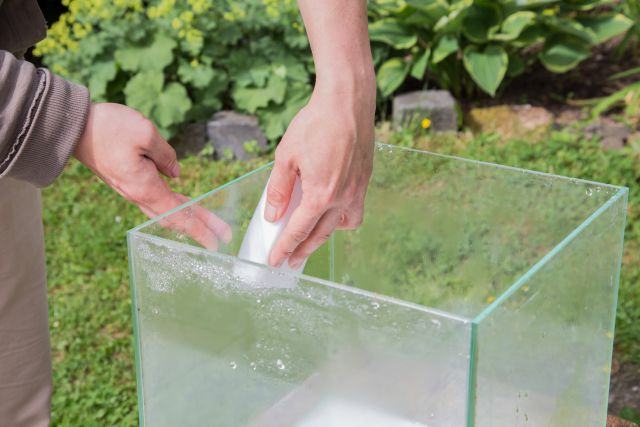
Cleaning the silicone seams
Especially in transparent silicone seams, visible and tough-to-remove algae may sit in the nooks and crannies of the silicone. You won’t get far with conventional, manual methods in these cases.
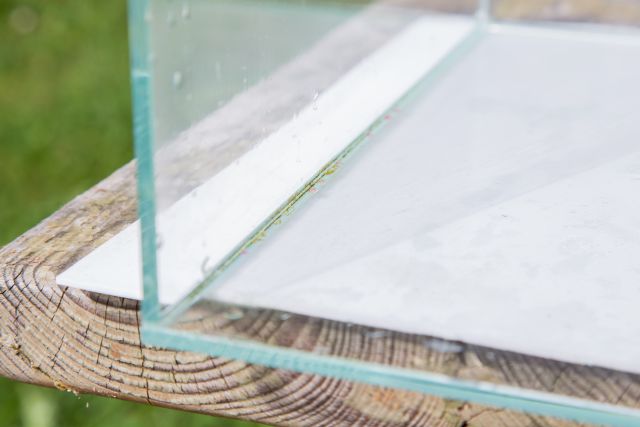
This tank was used as a marine aquarium. Because of this the silicone lines are not only colonized by green algae but also coralline algae.
For efficiently cleaning the aquarium silicone, household chlorine bleach is the way to go. The tank still lies with its opening to the side. Now soak some paper towels with bleach, roll them up and cover the bottom two seams of the tank. Please mind the safety instructions for the respective product when handling the cleaning agent. We recommend the use of gloves during this work to avoid direct skin contact. Cleaning should take place outside or in a well-ventilated room. Keep the bleach from dripping onto the floor. Also, it should not come into contact with your clothing.
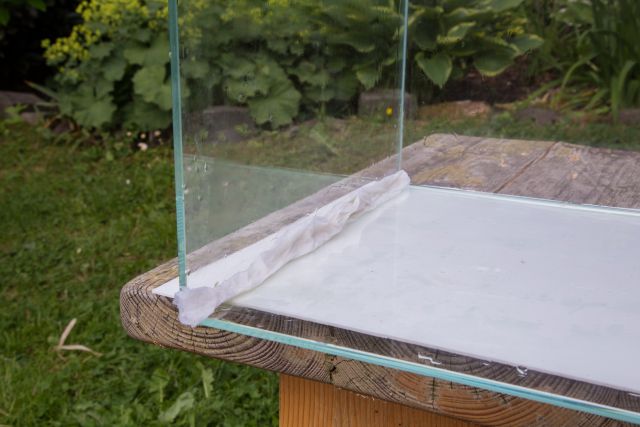
Now gently push the soaked paper towel into the corners of the tank to ensure direct contact with the silicone. Allow it to take effect for about a day. When the paper towel is removed, the algae should have faded. Now turn the tank 180° and repeat the procedure with the other two silicone lines. The tank needs to be sluiced properly afterwards to make sure that no cleaning agent remains inside.
Cleaning the glass in a running tank

In a running aquarium, cleaning the glass should be part of your weekly maintenance routine, so you always have a clear view of your underwater world and can enjoy it without disturbances. Soft, green algae films and diatoms can be easily removed using a sponge. If you are not keen on getting your hands wet, you may alternatively rely on a scraper equipped with a razor blade. These can be equipped with an expendable rod for deeper aquaria. With a scraper you can remove harder algae films such as spot algae, and even limestone. Be careful with the silicone lines: Don’t use the scraper too forcefully around them to prevent damage.
A common glass cleaner can be used to clean the outside of the aquarium and give it a high gloss finish. Since those cleaners often come in spray bottles, take great care of not getting cleaning agent into the aquarium water. As a precaution, the cleaner shouldn't be applied directly to the aquarium glass. It's better to spray it into a cloth first with which you’ll then clean the glass. Limestone can be removed from the outer panes with a scraper.